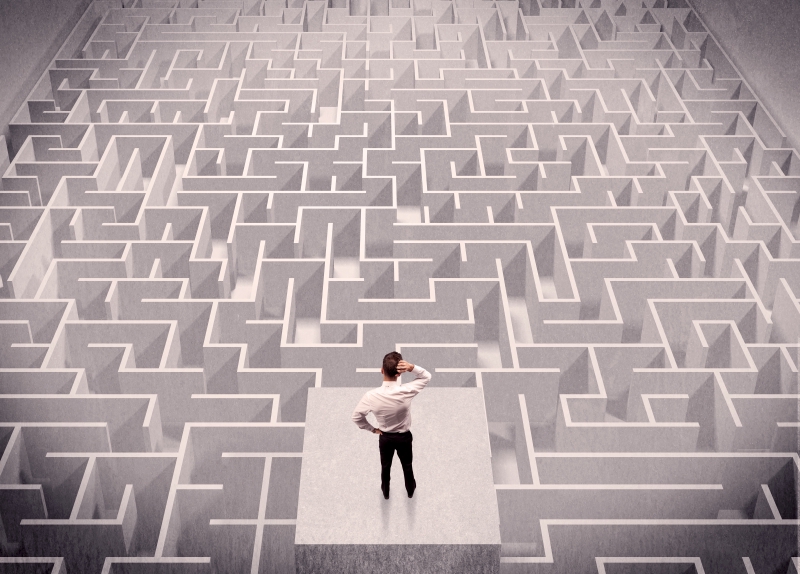Want your exhibition to be smart?

There’s a common problem that is, quite literally, disorientating folk the world over. And for once we’re not talking about a global pandemic.
This problem is estimated to be costing healthcare at least $1.2bn a year. In air travel, it’s reckoned to be costing the economy a whopping $25bn annually. And the same thing could be to blame for bricks-and-mortar retailing missing out on $50bn of sales annually.
All those figures are for the US only but the global costs are obviously even more enormous.
It turns out it is an issue prevalent in face-to-face exhibitions and trade shows, too. Undoubtedly costing the industry billions every year. So what’s this problem?
It’s the cost of getting lost.

Sector upon sector, it turns out that poor wayfinding and navigation is costing staggering amounts – either in inefficiencies, or lost revenue.
Research by Crowd Connected suggests that the value of a typical exhibition would be 20% higher if visitors had no problem finding everything they were looking for.
The economic argument is straightforward. The value of an exhibition or tradeshow is inexorably tied to the quantity and quality of participant interactions, whether that’s visitor-exhibitor, visitor-visitor or exhibitor-exhibitor. It also applies whether it’s a consumer show or an industry trade event.
The value is created in the cauldron of conversations. Those moments are why both the exhibitor and visitor benefit from attending. Without these interactions, the event has little or no value. Conversely, more interactions, more meetings, more conversations mean more value creation.
The organiser is attempting to extract some of the value that arises from those interactions. As one member of the senior management team at a leading organiser recently told me: “Our business is a connections business”.
But if inefficiencies or friction stymie those interactions, the value of the event is eroded and so is its appeal. Poor wayfinding and navigation is a frequent and significant cause of this friction.

Such inefficiencies are being brought back into focus as – mutant coronavirus variants notwithstanding – the world learns to live with Covid-19, and exhibitions return to the physical show floor.
Thanks to Google, Apple and the GPS chip on our smartphones, we’ve all been weaned on seeing a blue dot on an interactive map displayed in our hand, everywhere we go outdoors. Humankind is losing the skills to use traditional methods to navigate, like signage and static maps.
The latest generation of indoor positioning technology required to deliver that same experience indoors in an exhibition environment – overlaying the ‘blue dot’ on a digital plan of the show floor – is available, however. It’s integrated by the leading mobile app vendors. It’s reliable, easy to deploy and low cost. It also unlocks valuable visitor behavioural data and personalised recommendations based on a person’s journey around the show.
**
Increasing focus on smart events**
Conscious that their physical shows are competing with digital, there’s increasing focus from senior management across all the leading exhibition organisers on operating smart events.
What constitutes ‘smart’ exactly may vary, but what is most frequently meant is being more data-driven. There’s recognition in the industry that digital services are built on a data flywheel, making personalisation and optimisation easy. And it is what’s missing for physical events.
A great place to start is to focus on helping visitors find what they come for, and to discover what they didn’t even know is there. Providing navigation can be viewed as a foundation block. With it in place, physical businesses can start emulating the digital data flywheel.

Online, the likes of YouTube and Netflix have mastered discovery. They make it easy for consumers to find everything of value. Exhibition organisers should take heed and provide smartphone-based navigation and wayfinding.
Crowd Connected provides events, digital map providers and app developers with a best-in-class, low cost indoor positioning system for ‘blue dot’ navigation. mobile tracking, personalised engagement and footfall analytics. Contact us for more information and to see a demo of our platform and tools in action.